Visiting Masters of "Kyo Yuzen" hand-painted kimonos, produced by Kyoto's elegant culture.
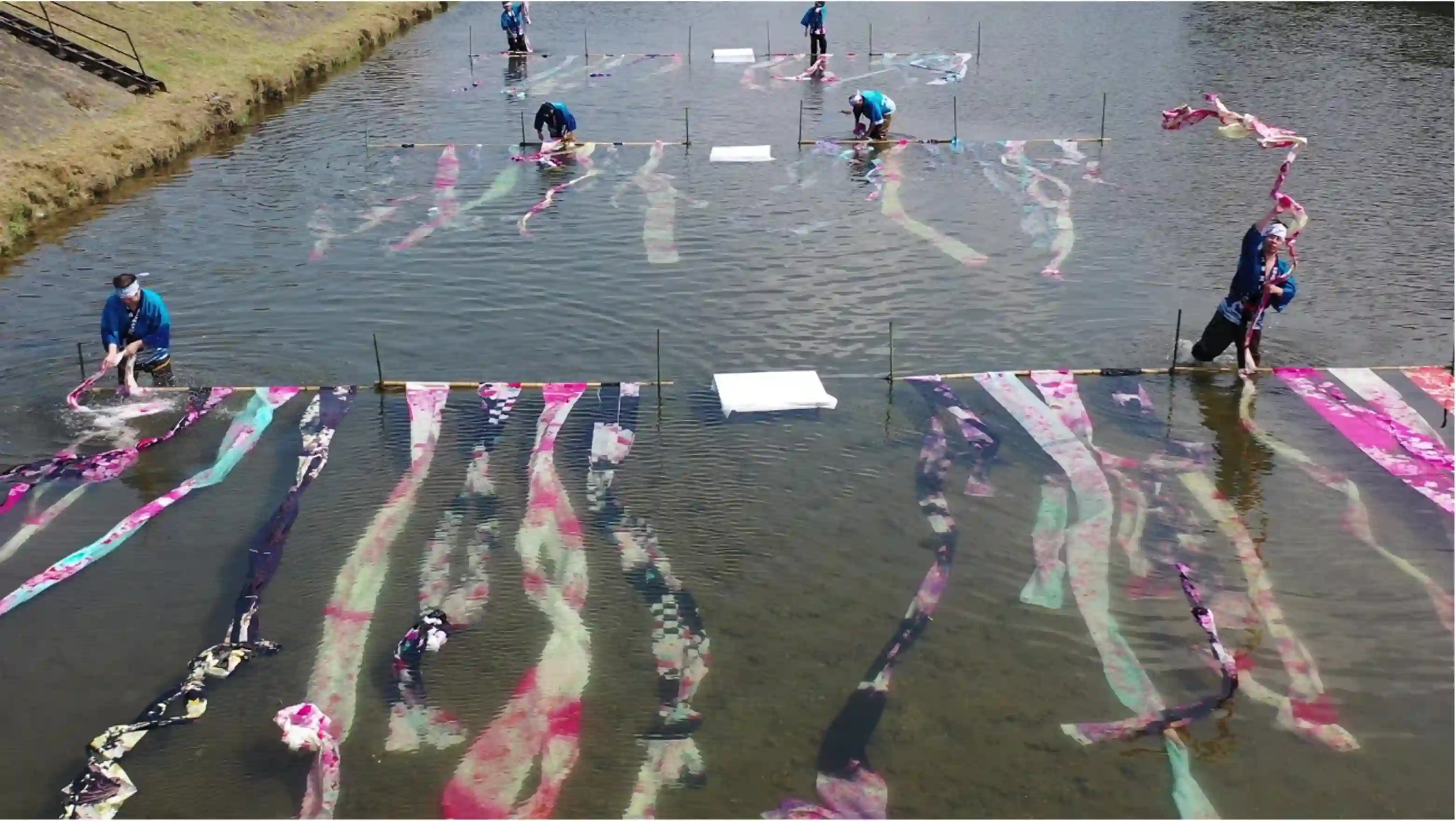
The story of Yuzen Nagashi, once held along the Kamo and Hori Rivers that flow through Kyoto City, is still told today as a seasonal tradition in Kyoto, the city of kimonos.
Kyo Yuzen, the oldest of the three major Yuzen styles, was created during the Genroku era (1688-1704). Kyo Yuzen, a traditional Japanese style of pattern dyeing, continues to attract many kimono fans even after more than 300 years.
When Yuzen dyeing, which is the origin of Kyo-Yuzen, was born, the Edo shogunate was enforcing the "prohibition of extravagance," a law that forbade extravagance. While luxurious embroidered kimonos and fully dyed kimonos with dappled patterns were banned and people were forced to be thrifty, the gorgeous Kyo Yuzen, which was born outside of the prohibition, is said to have captured the hearts of many common people.


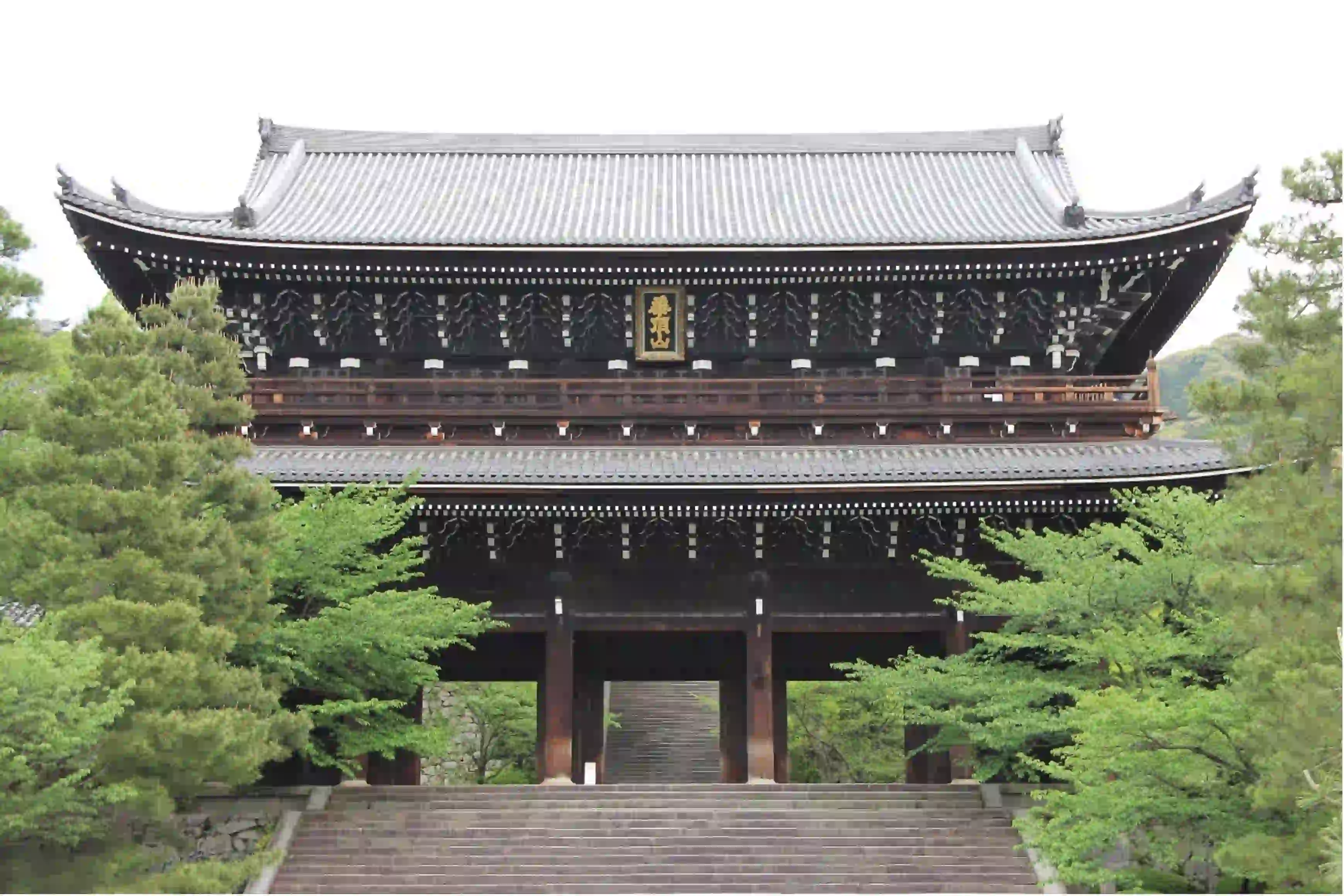
Chi-on-in Temple in Higashiyama, Kyoto and its Connection with Yuzen Dyeing
Yuzen-dyeing uses a technique in which richly colored, painterly patterns are drawn and dyed. Miyazaki Yuzenzai, a fan painter in the Edo period, is regarded as the originator of Yuzen dyeing.
Yuzen Dyeing started when the painting style of Yuzenzai, who lived in front of the gates of Chi-on-in, one of Kyoto's representative temples, became popular and was incorporated into the design of kimono.
Chion-in Temple’s Yuzen Garden, named after Yuzenzai, has two gardens; a circuit style garden drawing spring water from the Higashiyama mountains and a dry landscape garden. With a beautiful view of Higashiyama in the background, the Yuzen Garden is known as a place that attracts not only Yuzen fans but also many visitors from Japan and abroad.


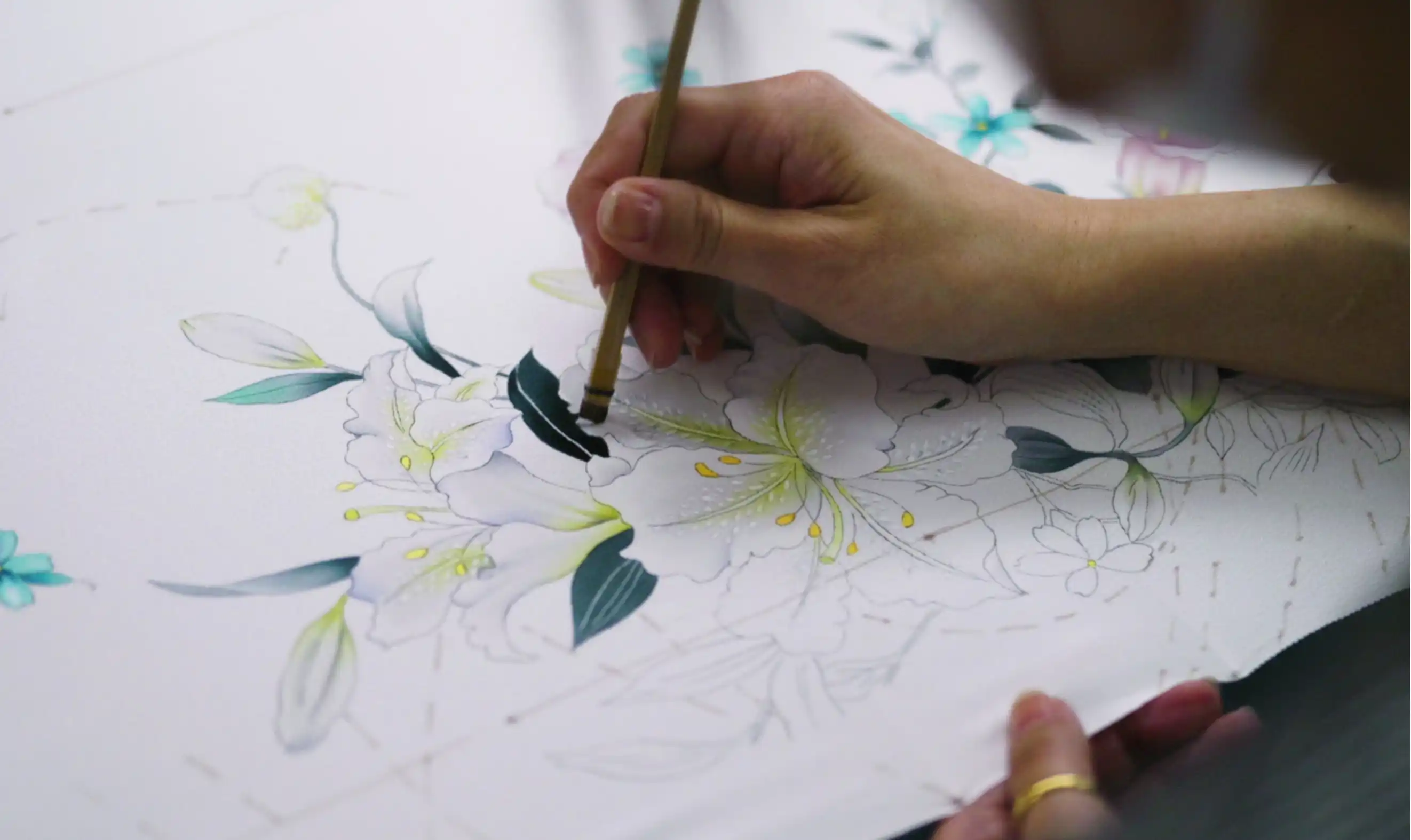
Master Craftspersons' Hand-painted Techniques Lasting for 150 years
With the advent of paper stencils and printed Yuzen, the number of kimono studios that continue the time-consuming hand-painted Yuzen tradition has dwindled. Under such circumstances, Isshin Kobo, a Studio in Kyoto, continues to preserve its valuable hand-painted traditions.
With a history of more than 150 years, Isshin Kobo is committed to passing on its valuable hand-painted techniques to the future. The studio specializes in Fusai-zome, a dyeing technique that has been used for four generations. It was the first studio in the world to obtain trademark registration for this technique, which is very rare.
Because it is dyed while wetting the fabric and cannot be interrupted, dyeing is sometimes continued for more than 10 hours without a break.


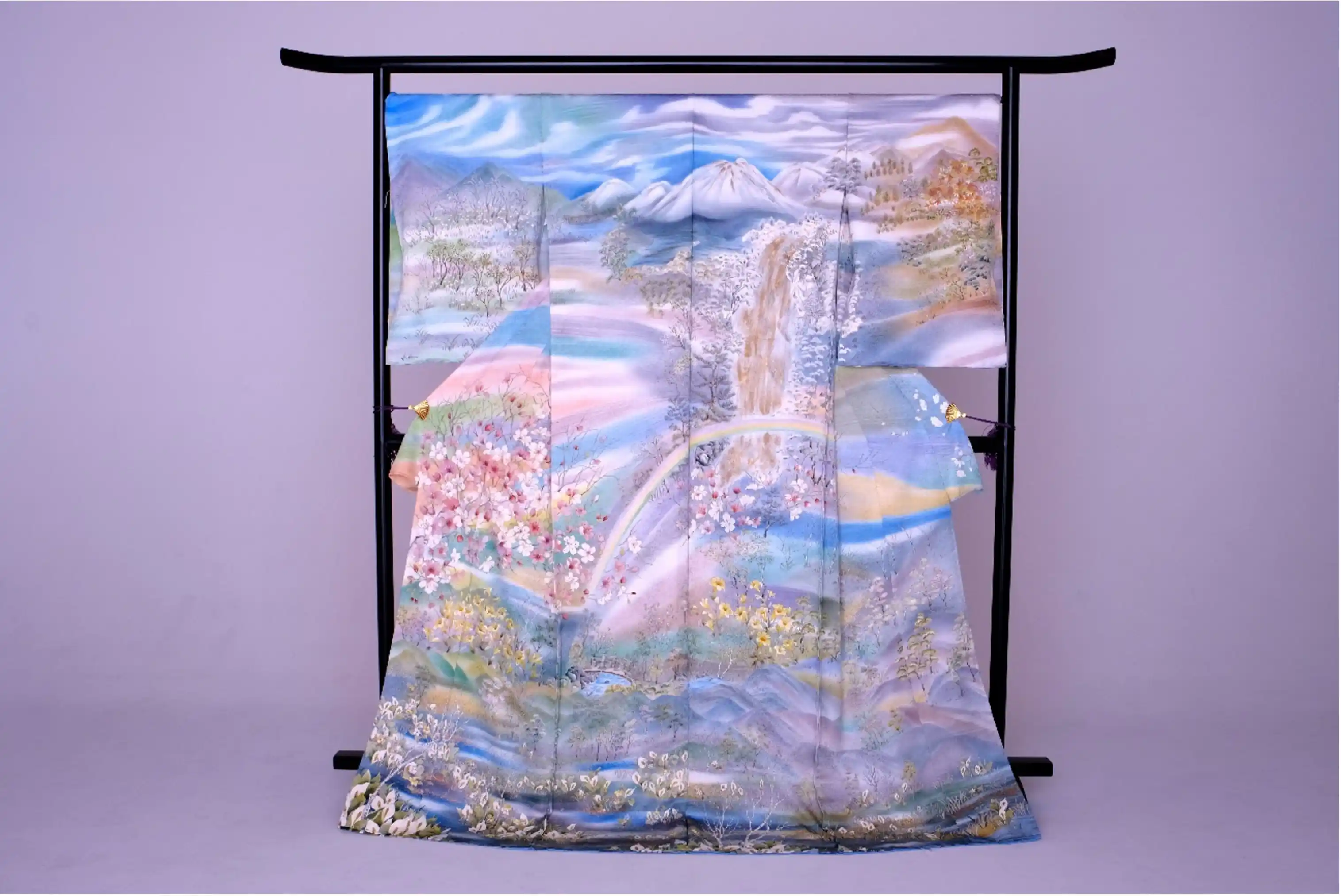
Strolling the streets of the ancient city in
"a gem like kimono”
For 150 years, Isshin Kobo has been making custom-ordered art works, including kimonos, stoles, fans, and other items.
It is one of the few studios in Kyoto that not only takes orders, but also offers various programs on a regular basis, such as tours of the studio, dressing lessons, and lectures on how to buy kimonos.
One particularly popular program allows visitors to rent valuable kimonos at the studio and explore the city of Kyoto. Visitors can experience wearing expensive pieces and precious kimonos that are out of reach in everyday life at a reasonable price.
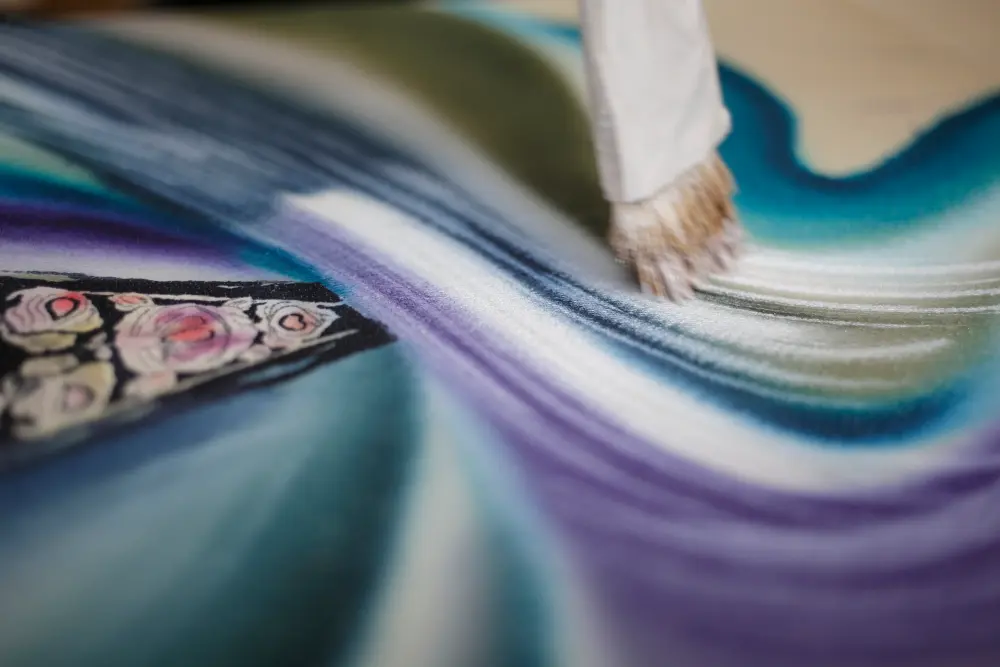
Book this activity
See More
Kyoto Kimono Atelier Visit and Custom Orders - Isshin Kobo Hand-drawing Kyoyuzen since 1858


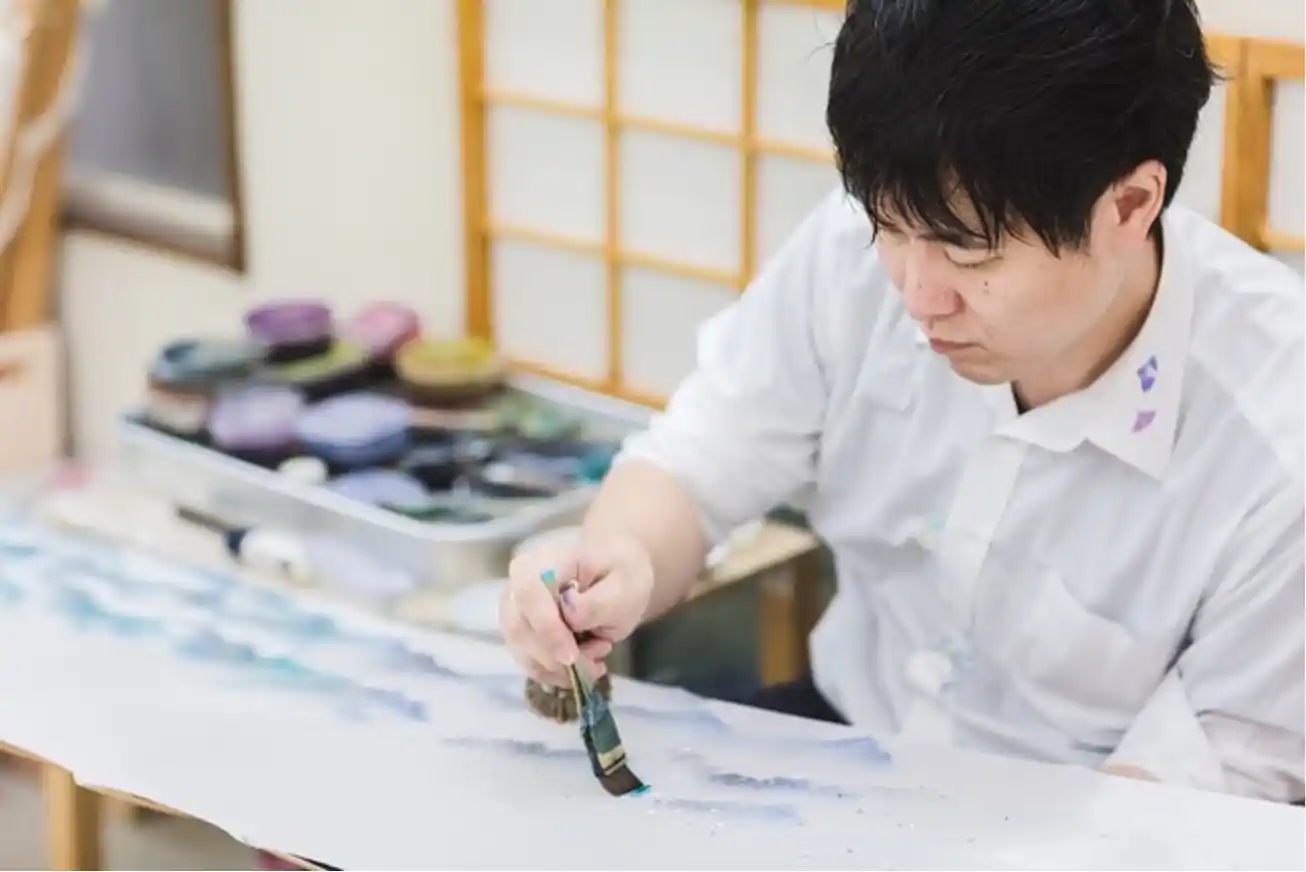
Creating one-of-a-kind art works by feeling the "wind" inside each person.
“What I value most is communication with customers. When I get to know a person's personality through dialogue, I can feel the 'wind' within that person. I draw on that," says Yohei Kato, the fourth-generation owner of Isshin Kobo. Kato's pride and joy is to create a piece of clothing that no one else can imitate, a piece of clothing that delivers a sense of excitement.
The valuable tradition of hand-painted Yuzen, a valuable technique and world-class beauty of this country is currently being lost. Please come and touch such one-of-a-kind works of art.


Area Overview

Area Overview
【Access from Osaka to Kyoto】
(By Hankyu Kyoto Line Semi-Express)
- ・Train: FromOsaka Umeda [Hankyu] Station to Omiya Station
(Approximate travel time: about 40minutes)



